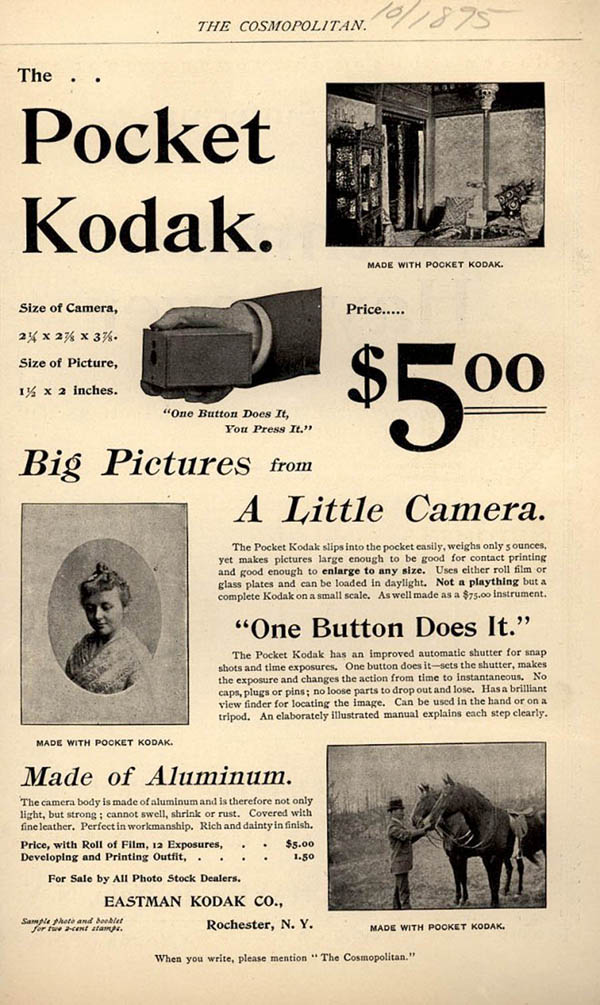

The tiny Pocket Kodak was introduced in July 1895 with either red or black leather covering, priced at $5. It was a very significant camera since it was the first Kodak to use paper-backed roll film, with a red window on the back to indicate the exposure number. These features were invented by Samuel Turner of the Boston Camera Mfg. Co. in 1892; George Eastman paid royalties to use them, until buying out Boston Camera in the summer of 1895.

Initially the Pocket Kodak used a Tisdell sector shutter that was cocked and fired using the same lever, and had a round viewfinder. The shutter assembly and red window were removable, the latter to allow using a single glass plate in place of roll film.

The internal construction of the 1895 model was initially made of aluminum. This was changed to wood in the 1896 and later models.
The paper-backed film rolls yielded 12 pictures measuring 1½ x 2, from 35mm unperforated film stock. It is a truly tiny camera, measuring only about 2¼ x 3 x 4, and actually could fit in a large pocket.
This camera is complete with its original leather carrying case, advertising booklet, and instruction manual. The original dealer's name and address is stamped in two locations inside the carrying case Travers & Leet, of Oakland, CA. The same company sold my 1896 Bulls-Eye No. 2. The top of the camera is stamped in gilt with the original owner's name, E.H. Leach, who studied at UC Berkeley and later became a lawyer in Oakland in the first decade of the 20th century.
